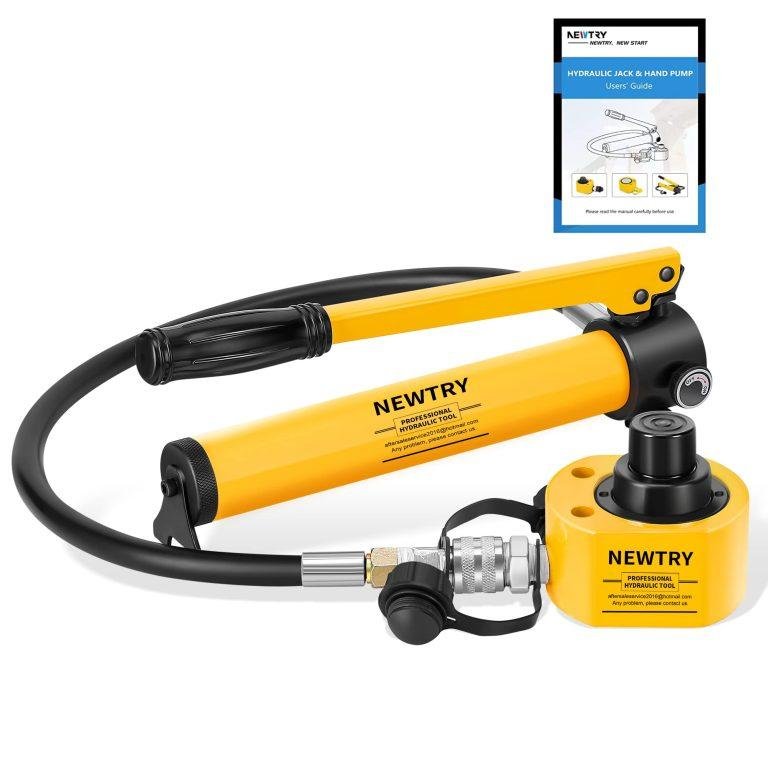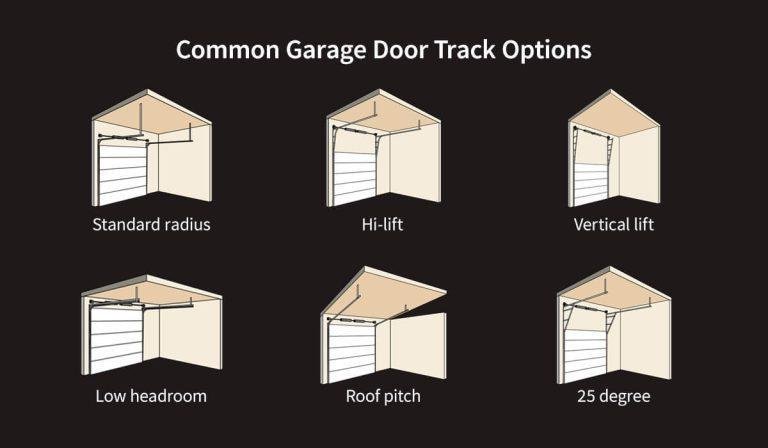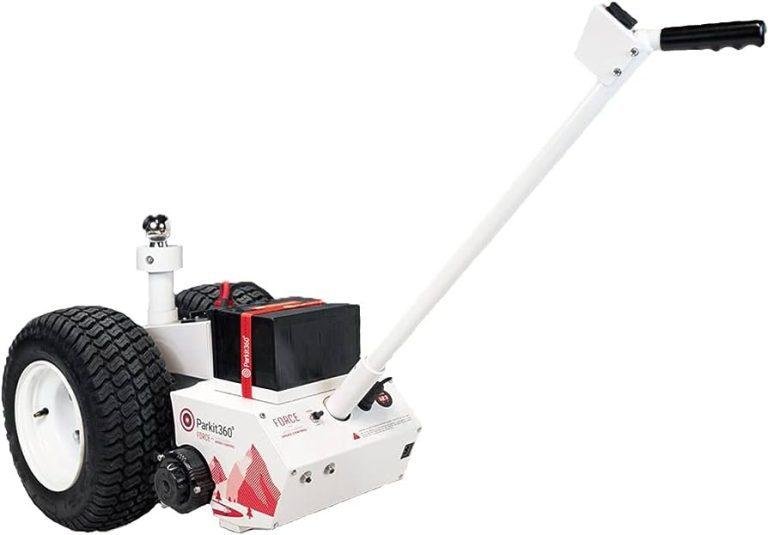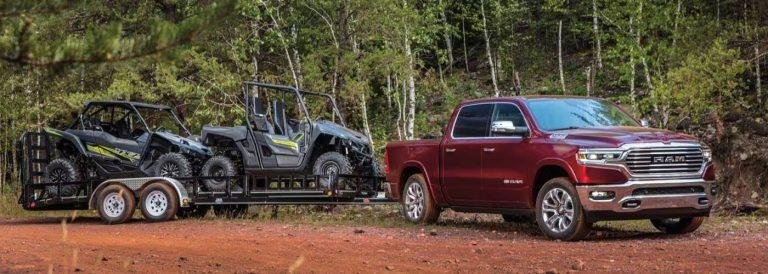A hitch ball mount attaches to a vehicle’s hitch receiver and provides a secure connection for towing trailers. The hitch ball mount is an essential component for towing and ensures safe and efficient towing operations.
It enables the attachment of a hitch ball, which provides a connection point for the trailer. With various sizes, weight capacities, and types available, selecting the appropriate hitch ball mount is crucial to ensure compatibility and towing safety. Whether towing a small utility trailer or a large rv, the hitch ball mount plays a critical role in connecting the trailer to the vehicle and enabling smooth and secure towing experiences.
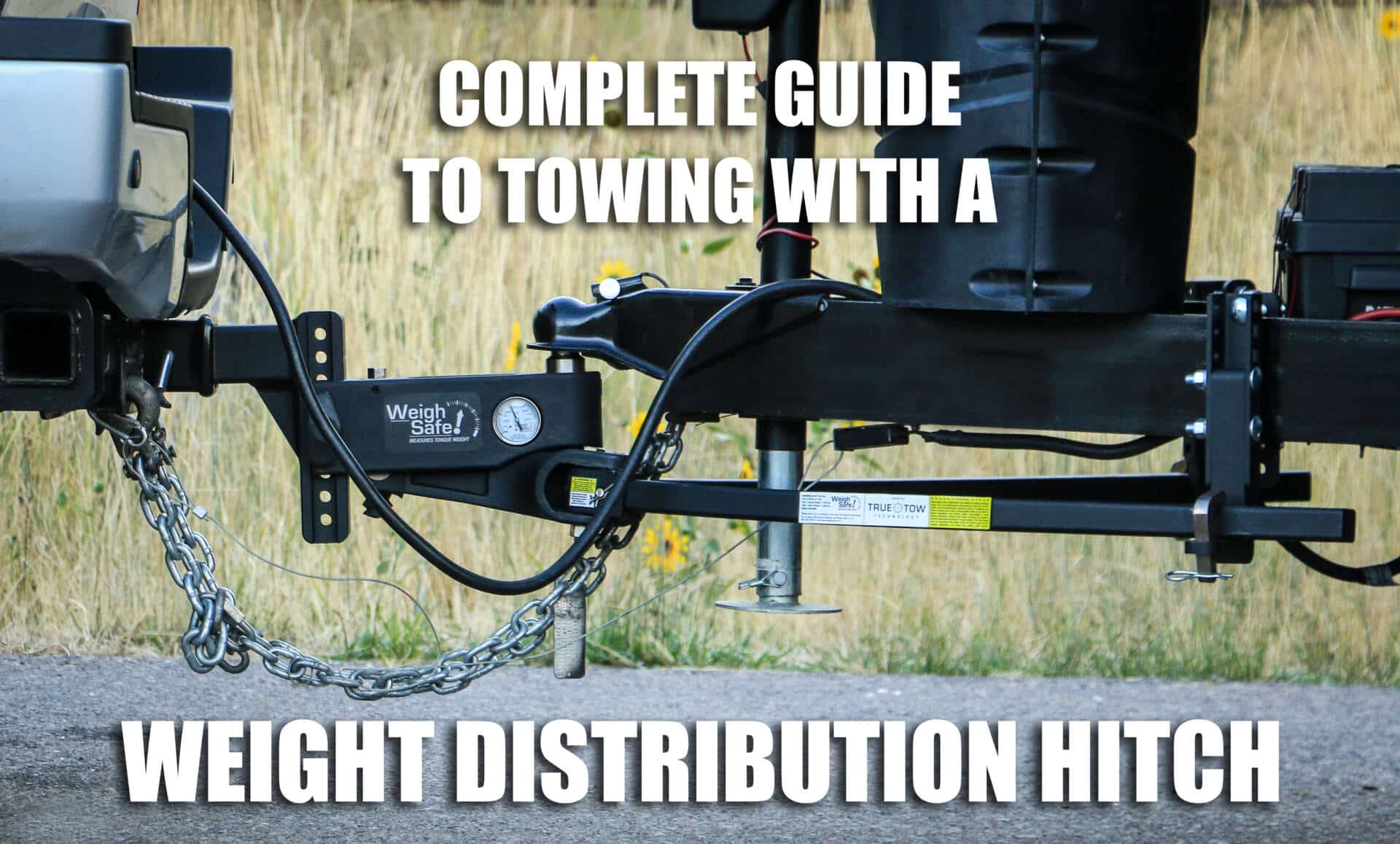
Credit: www.weigh-safe.com
Understanding Hitch Ball Mounts
A hitch ball mount is an essential part of towing equipment that connects a trailer to a vehicle. It provides a secure and reliable connection, enabling the safe transportation of heavy loads. With different sizes and weight capacities available, understanding hitch ball mounts is crucial for a successful towing experience.
Definition And Purpose Of A Hitch Ball Mount
A hitch ball mount is a crucial component of a trailer hitch system. It serves as the connection point between the vehicle and the trailer, allowing for safe and secure towing. The primary purpose of a hitch ball mount is to provide a secure attachment point for the trailer’s coupler, enabling it to be towed behind a vehicle.
By understanding the different types of hitch ball mounts and selecting the right one for your towing needs, you can ensure a smooth and secure towing experience.
Types Of Hitch Ball Mounts
When it comes to hitch ball mounts, there are several types available, each designed to accommodate specific towing requirements. Here are some of the most common types:
- Fixed ball mounts: These are the most basic type of hitch ball mounts, featuring a fixed ball platform that cannot be adjusted vertically. They are typically used for towing trailers of similar heights.
- Adjustable ball mounts: As the name suggests, adjustable ball mounts allow for vertical adjustment of the hitch ball platform. This flexibility makes them suitable for towing trailers of varying heights.
- Multi-ball mounts: These versatile hitch ball mounts feature multiple hitch balls of different sizes on a single platform. They allow you to easily switch between different trailer couplers without the need for additional mounts.
- Pintle hitches: While not technically a ball mount, pintle hitches deserve a mention. They consist of a lunette eye attached to the trailer and a pintle hook attached to the towing vehicle. Pintle hitches offer increased towing capacity and are commonly used for heavier loads or in off-road applications.
Importance Of Choosing The Right Hitch Ball Mount
Selecting the appropriate hitch ball mount is crucial for a safe and successful towing experience. Here’s why choosing the right hitch ball mount matters:
- Safety: Using the correct hitch ball mount ensures that the trailer is properly and securely attached to the towing vehicle. This reduces the risk of accidents, swaying, and detachment while on the road.
- Weight distribution: Different trailers have varying tongue weights, which is the downward force exerted on the hitch ball by the trailer. The right hitch ball mount helps distribute this weight properly, maintaining stability and balance.
- Compatibility: Choosing a hitch ball mount that matches the size and weight capacity requirements of your trailer is essential. Using an ill-fitting or inadequate hitch ball mount can result in damage to the trailer, hitch, or towing vehicle.
- Towing capacity: Each hitch ball mount has a designated towing capacity. It is crucial to select a hitch ball mount that can handle the weight of your trailer and any additional cargo.
- Ease of use: Selecting a hitch ball mount that suits your towing needs simplifies the process of attaching and detaching the trailer. The right hitch ball mount will provide convenience and efficiency.
By understanding the different types of hitch ball mounts available and carefully selecting the appropriate one based on your towing requirements, you can ensure a safe, stable, and hassle-free towing experience.
Different Types Of Hitch Ball Mounts
A hitch ball mount is an essential towing accessory that securely connects the trailer to the vehicle. There are various types available, including fixed, adjustable, and multi-ball mounts, each designed to meet different towing needs and trailer sizes. Whether you’re hauling a boat, camper, or utility trailer, choosing the right hitch ball mount is crucial for safe and efficient towing.
A hitch ball mount is an essential component in towing trailers and other heavy loads. It helps to connect the trailer to the tow vehicle securely, ensuring safe and smooth towing experiences. If you’re new to towing or simply curious about different types of hitch ball mounts, this section will give you an overview of the most common options available.
Fixed Ball Mount:
- Designed for towing applications where the tongue height of the trailer is known and consistent.
- Offers a fixed rise or drop, allowing you to choose the appropriate height for your towing setup.
- Typically made of solid steel for durability and strength.
- Available in various weight ratings to accommodate different trailer weights and towing capacities.
Adjustable Ball Mount:
- Provides the flexibility to adjust the rise or drop to match the level of the trailer tongue.
- Ideal for towing multiple trailers with varying tongue heights or towing vehicles that have different heights.
- Typically features multiple holes or a slide mechanism for adjusting the height.
- Offers versatility and convenience for various towing scenarios.
Heavy-Duty Ball Mount:
- Specifically designed for towing heavy loads, such as construction equipment or large trailers.
- Constructed from heavy-duty materials, such as reinforced steel, to handle higher weight capacities.
- Offers increased stability and strength, providing additional safety during towing.
- Suitable for professional towing applications or individuals who frequently tow heavy loads.
Pintle Hitch Ball Mount:
- Commonly used for towing agricultural or military equipment.
- Consists of a lunette ring and a pintle hook that provides a secure connection between the tow vehicle and trailer.
- Offers enhanced articulation, making it suitable for off-road or uneven terrains.
- Usually used in heavy-duty towing applications that require extra strength and stability.
Weight Distributing Ball Mount:
- Designed to distribute the trailer’s weight more evenly between the tow vehicle’s axles.
- Utilizes tensioned spring bars to transfer a portion of the tongue weight to the front wheels of the tow vehicle.
- Helps improve stability, control, and braking performance while towing heavy loads.
- Recommended for trailers with high tongue weights or when the weight distribution is uneven.
These different types of hitch ball mounts cater to various towing needs and preferences. Whether you’re towing a small utility trailer or a heavy equipment hauler, choosing the right hitch ball mount is crucial for a safe and efficient towing experience.
Factors To Consider When Choosing A Hitch Ball Mount
A hitch ball mount is an essential part of towing equipment that connects the trailer to the towing vehicle. When choosing a hitch ball mount, it is important to consider factors such as trailer weight capacity, ball size, shank length, and rise/drop measurements to ensure safe and secure towing.
Choose the right hitch ball mount for your towing needs.
A hitch ball mount is an essential component when it comes to towing your trailer safely and securely. However, choosing the right hitch ball mount can be a daunting task with various factors to consider. To help you make an informed decision, here are the key factors you should keep in mind:
Tongue Weight And Gross Trailer Weight:
- Tongue weight refers to the downward force that the trailer tongue exerts on the hitch. It is crucial to choose a hitch ball mount with a weight rating that matches or exceeds the tongue weight of your trailer.
- Gross trailer weight is the total weight of the loaded trailer. Make sure the hitch ball mount’s weight capacity is suitable for your trailer’s gross weight.
Hitch Class And Receiver Size:
- Different types of hitches, categorized by classes, are designed for specific towing capacities. Determine the appropriate hitch class based on the weight rating you need for your trailer.
- Consider the receiver size of your trailer hitch, typically 1 ¼-inch or 2-inch. Ensure that the ball mount is compatible with the receiver size for a proper fit.
Ball Size And Weight Capacity:
- The size of the hitch ball should match the coupler size of your trailer. Common sizes include 1 7/8 inches, 2 inches, and 2 5/16 inches.
- Select a ball mount with a weight capacity that exceeds the maximum gross trailer weight. It is crucial to have a safety margin for towing heavy loads.
Drop Or Rise Measurement:
- The drop or rise measurement refers to the distance between the top of the ball platform and the mounting platform. This ensures that the trailer will be level when attached to the hitch. Measure the height difference to determine the appropriate drop or rise needed.
Material And Finish:
- The material and finish of the ball mount determine its durability and resistance to rust and corrosion. Common materials include steel and aluminum, with powder coating or chrome plating for added protection.
- Consider the climate and environment where you will be towing to ensure the longevity of the ball mount.
Keep these factors in mind when choosing a hitch ball mount to ensure a secure and hassle-free towing experience. Selecting the right hitch ball mount based on tongue weight, gross trailer weight, hitch class, receiver size, ball size, weight capacity, drop or rise measurement, and material and finish will help you tow with confidence.
Remember, safety should always be a top priority when towing your trailer.
Proper Installation And Maintenance Of Hitch Ball Mounts
A hitch ball mount is a crucial component for towing trailers, ensuring a secure connection between the vehicle and trailer. Proper installation and maintenance of hitch ball mounts are essential for safe and efficient towing. Keep your ball mount in top shape to ensure a smooth and secure towing experience.
Hitch ball mounts are essential components when it comes to towing trailers. These sturdy attachments help connect your vehicle’s hitch to the trailer, ensuring a secure and stable connection. To ensure the proper functionality and longevity of your hitch ball mount, it’s crucial to follow the correct installation and maintenance procedures.
This section will provide you with a step-by-step installation guide, tips for ensuring proper torque and security, as well as regular inspection and maintenance advice. We’ll also discuss the importance of lubricating and protecting against rust to keep your hitch ball mount in top-notch condition.
Step-By-Step Guide To Installing A Hitch Ball Mount
Proper installation of your hitch ball mount is vital to ensure safe towing. Follow these steps to install your hitch ball mount correctly:
- Position your vehicle: Park your vehicle on a flat surface and engage the parking brake. This will provide stability during the installation process.
- Choose the right hitch ball mount: Select a hitch ball mount that matches your towing capacity and hitch class. Check your vehicle’s towing specifications to determine the appropriate size and weight capacity for your specific needs.
- Attach the hitch ball mount to the receiver: Insert the shank of the hitch ball mount into the receiver tube of your vehicle’s hitch. Make sure the hitch pin holes align. Use a hitch pin and clip or a hitch lock to secure the mount in place.
- Tighten the hitch ball mount: Use a torque wrench to tighten the hitch ball mount to the manufacturer’s specified torque. This will ensure a secure connection between the mount and the receiver tube.
Ensuring Proper Torque And Security
To guarantee the safety of your towing setup, it’s essential to pay attention to proper torque and security measures:
- Check the torque periodically: Regularly inspect the tightness of your hitch ball mount to ensure it hasn’t loosened over time. Torque it to the manufacturer’s specifications if necessary.
- Use safety chains: Always attach safety chains from the trailer to the vehicle’s hitch. These chains act as backup protection in case the hitch ball mount or coupler fails.
- Consider using a hitch stabilizer: If you experience excessive movement or sway while towing, a hitch stabilizer can help minimize these vibrations and enhance stability.
Regular Inspection And Maintenance Tips
Performing regular inspections and maintenance can prolong the lifespan of your hitch ball mount. Consider the following tips:
- Clean after each use: Remove dirt, grime, and debris from your hitch ball mount to prevent corrosion and maintain optimal performance.
- Check for signs of wear: Inspect the hitch ball mount for signs of wear, such as cracks, bends, or rust. If any damage is detected, replace the mount immediately.
- Lubricate moving parts: Apply a high-quality lubricant to the moving parts of your hitch ball mount, such as the hitch ball and shank, to prevent friction and ensure smooth operation.
Lubrication And Protection Against Rust
Proper lubrication and protection against rust are vital for the longevity of your hitch ball mount. Consider the following measures:
- Apply a rust inhibitor: Coat your hitch ball mount with a rust inhibitor to protect it from corrosion caused by exposure to moisture and harsh weather conditions.
- Use a grease or anti-seize compound: Apply a thin layer of grease or anti-seize compound to the hitch ball to prevent rust and ensure smooth movement.
- Regularly inspect for rust: Routinely check your hitch ball mount for any signs of rust. If rust is present, remove it using a wire brush or sandpaper and apply a rust-resistant paint or coating.
By following these installation and maintenance guidelines, you can ensure a properly functioning and durable hitch ball mount, providing you with a safe and reliable towing experience.
Safe Towing Practices With Hitch Ball Mounts
A hitch ball mount is a crucial component in safe towing practices. It allows you to securely attach a trailer to your vehicle, ensuring a stable and reliable connection. Understanding how to properly use a hitch ball mount is essential for safe and efficient towing.
Coupling and uncoupling a trailer, distributing weight and balance, understanding towing capacity and limitations, and practicing safety precautions while on the road are all crucial aspects of safe towing with hitch ball mounts. Whether you are a seasoned trailer owner or a novice, it’s important to follow these guidelines to ensure a smooth towing experience.
Additionally, knowing how to troubleshoot common issues with hitch ball mounts can help you quickly address any problems that may arise. Let’s delve into each of these topics in detail:
Properly Coupling And Uncoupling A Trailer:
- Align the hitch coupler with the hitch ball and slowly lower the coupler onto the ball.
- Securely latch the coupler and lock it in place.
- Verify that the coupler is properly secured by performing a visual and physical inspection.
Distributing Weight And Balance For Safe Towing:
- Ensure that the trailer’s weight is evenly distributed over the axles.
- Avoid overloading the trailer or placing excessive weight towards the front or back.
- Use a weight distribution hitch if necessary to maintain proper balance.
Understanding Towing Capacity And Limitations:
- Consult your vehicle’s owner’s manual to determine its towing capacity.
- Consider factors such as the trailer’s weight, cargo weight, and any additional equipment or passengers.
- Avoid exceeding the towing capacity to prevent strain on your vehicle’s engine and transmission.
Safety Precautions While On The Road:
- Always perform a pre-trip inspection to check for any loose connections, tire pressure, and proper trailer lighting.
- Maintain a safe driving speed and allow for increased stopping distances.
- Use trailer brakes, if available, to ensure controlled and safe braking.
Troubleshooting Common Issues With Hitch Ball Mounts:
- Examine the hitch ball alignment and ensure it is the correct size for the coupler.
- Lubricate the hitch ball to reduce friction and minimize wear.
- Inspect the hitch ball mount for any signs of damage or rust and replace if necessary.
By adhering to these safe towing practices, you can enjoy worry-free travels while maximizing the performance and lifespan of your hitch ball mount. Remember to always prioritize safety and make necessary adjustments for a smooth and enjoyable towing experience.
Tips For Choosing Additional Towing Accessories
When choosing additional towing accessories, it’s important to understand what a hitch ball mount is. This component connects the trailer to the vehicle and should be selected based on the trailer’s weight and the vehicle’s towing capacity. Proper selection ensures safe and secure towing.
Whether you’re a seasoned traveler or a newbie to towing, selecting the right accessories for your hitch ball mount can greatly enhance your towing experience. Here are some important tips to consider when choosing additional towing accessories to ensure your safety on the road:
Trailer Brake Controllers:
- A trailer brake controller is essential for ensuring safe and controlled braking when towing heavy loads.
- It allows you to manually apply the brakes on your trailer or adjust the trailer’s braking sensitivity to suit different road conditions.
- Choose a trailer brake controller that is compatible with your vehicle’s braking system and offers features like proportional braking for a smoother towing experience.
Sway Control Systems:
- Sway control systems help minimize the side-to-side movement of your trailer, reducing the risk of trailer sway.
- These systems use various mechanisms such as friction, cam-action, or weight distribution to keep your trailer stable during towing.
- Consider the size and weight of your trailer when selecting a sway control system, ensuring it’s compatible and effective for your specific towing needs.
Weight Distribution Systems:
- Weight distribution systems distribute the weight of the trailer more evenly across all axles, improving towing stability and control.
- They help ensure that the weight of the trailer is properly distributed between the tow vehicle and trailer axles, preventing excessive strain on your towing setup.
- Choose a weight distribution system that is suitable for your trailer’s weight and tongue weight, considering factors such as hitch class and towing capacity.
Safety Chains And Breakaway Kits:
- Safety chains and breakaway kits are crucial safety components when towing a trailer.
- Safety chains provide an additional connection between your trailer and tow vehicle, serving as a backup in case your main trailer hitch fails.
- Breakaway kits activate the trailer’s brakes if it becomes detached from the tow vehicle, helping prevent accidents caused by runaway trailers.
Trailer Hitch Locks And Covers:
- Trailer hitch locks offer additional security by preventing unauthorized removal of your hitch ball mount.
- They deter theft and provide peace of mind when leaving your trailer unattended.
- Consider using hitch covers to protect your hitch ball mount from weather elements and keep it in good condition.
By considering these tips for choosing additional towing accessories, you can ensure a safer and more enjoyable towing experience. Remember to select accessories that are compatible with your trailer and vehicle, keeping in mind factors such as weight, stability, and security.
Happy towing!
Common Hitch Ball Mount Faqs
A hitch ball mount is an essential component for towing, providing a secure connection between a vehicle and the trailer. It allows you to safely and effectively transport heavy loads without compromising stability or control.
What Is A Hitch Ball Mount?
A hitch ball mount is an essential component of any towing setup. It is a metal attachment that fits into a vehicle’s hitch receiver and provides a secure connection point for a trailer’s hitch coupler. With various sizes, styles, and weight capacities available, hitch ball mounts offer flexibility and convenience when towing different trailers.
Common Hitch Ball Mount Faqs:
Can i use different ball sizes on the same ball mount?
- Yes, many ball mounts are designed with a platform that allows for different ball sizes to be attached. This means you can switch out balls to accommodate trailers with different coupler sizes.
Can i use an adjustable ball mount interchangeably with different trailers?
- Absolutely! Adjustable ball mounts are incredibly versatile and can be used with various trailers. Simply adjust the ball height or remove the ball and install a different one if needed. It’s a convenient option for those who tow multiple trailers.
What is the maximum weight capacity for a hitch ball mount?
- The weight capacity of a hitch ball mount depends on its design and construction. It is crucial to select a ball mount that can handle the maximum weight capacity of your trailer and any cargo you intend to tow. Always refer to the manufacturer’s specifications to ensure safe towing.
How do i determine the correct drop or rise measurement for my trailer?
- Finding the correct drop or rise measurement is crucial for safe and level towing. To determine this measurement, follow these steps:
- Measure the height from the ground to the top of your trailer’s hitch coupler.
- Measure the height from the ground to the inside top edge of your vehicle’s hitch receiver.
- The difference between these two measurements will give you the required drop or rise measurement for your ball mount.
Are There Any Specific Maintenance Tasks I Should Perform Regularly?
- To ensure your hitch ball mount remains in good condition and functions properly, consider these maintenance tasks:
- Regularly inspect your ball mount for signs of wear or damage.
- Keep the ball mount clean and free of debris.
- Lubricate moving parts, such as the hitch ball, for smooth operation.
- Tighten any loose bolts or hardware.
- Follow manufacturer guidelines for any specific maintenance procedures.
Understanding the basics of a hitch ball mount is essential for safe and efficient towing. By choosing the right ball mount, considering weight capacities, and performing regular maintenance, you can enjoy seamless towing experiences with confidence. Remember to prioritize safety and always check manufacturer recommendations for specific guidelines.
Frequently Asked Questions On What Is A Hitch Ball Mount?
What Is A Ball Mount Hitch Used For?
A ball mount hitch is used to attach trailers or other towing devices to a vehicle. It is a removable, metal component that fits into the vehicle’s trailer hitch receiver. The ball mount hitch has a ball platform on which a trailer hitch ball is mounted.
The ball size should match the trailer’s coupler size for a secure connection. Once the ball mount hitch is inserted into the receiver, it is secured with a pin and clip or a hitch lock. This allows the vehicle and the trailer to move as a single unit.
The ball mount hitch provides a strong and reliable connection, ensuring safe towing of the trailer. It is important to choose the correct ball mount hitch with the appropriate towing capacity and rise or drop to match the height of the trailer.
What Is The Difference Between A Trailer Hitch And A Ball Mount?
A trailer hitch and a ball mount serve different purposes. A trailer hitch is the complete towing system, consisting of a receiver and a ball mount. The receiver is attached to the vehicle, while the ball mount slides into the receiver.
The ball mount includes a trailer ball that provides the connection point for attaching the trailer. On the other hand, a ball mount is just one component of a trailer hitch. It is the part that slides into the receiver and holds the trailer ball.
The ball mount determines the height and angle of the trailer ball, allowing for proper alignment with the trailer coupler. In summary, a trailer hitch is the complete towing system that includes both the receiver and the ball mount. The ball mount is a specific part of the trailer hitch that holds the trailer ball and determines its positioning.
How Do You Install A Hitch Ball Mount?
To install a hitch ball mount: 1. Gather the necessary tools: a wrench, a ratchet, and a torque wrench. 2. Locate the receiver hitch on your vehicle’s rear. 3. Slide the mount into the receiver hitch, ensuring it is properly aligned.
4. Secure the mount with the provided pin and clip to prevent any movement. 5. Use the torque wrench to tighten the bolts according to the specifications in the manual. 6. Attach the hitch ball to the mount using the appropriate size wrench.
7. Tighten the hitch ball securely. 8. Double-check all connections to make sure everything is properly fastened. 9. Ensure the hitch ball is rated for the weight of your trailer. 10. Test the connection by applying slight pressure to make sure it is secure.
11. Now you are ready to tow with your hitch ball mount. Follow these steps carefully to install a hitch ball mount properly.
What Kind Of Hitch Mount Do I Need?
You need to determine what type of hitch mount is suitable for your vehicle. Consider the towing capacity and size of your vehicle, as well as the weight and dimensions of the load you intend to carry. There are various hitch mount types available, such as receiver hitches, gooseneck hitches, and fifth-wheel hitches.
Receiver hitches are the most common and versatile, as they can accommodate multiple accessories like bike racks and cargo carriers. Gooseneck hitches are ideal for towing larger loads, like livestock trailers or rvs. Fifth-wheel hitches are commonly used for towing heavy campers or horse trailers.
Ensure that you choose a hitch mount that matches the towing capacity of your vehicle and meets your specific towing needs. Consult your vehicle’s owner’s manual or seek professional advice to determine the appropriate hitch mount for your vehicle.
Conclusion
To sum up, a hitch ball mount is an essential component for towing a trailer safely and securely. It serves as a critical connection between the vehicle and the trailer, allowing for the transfer of weight and enabling smooth towing.
When choosing a hitch ball mount, factors such as the trailer’s weight, tongue weight, and receiver size should be considered to ensure compatibility and optimal performance. Additionally, selecting the right hitch ball mount that meets industry standards and regulations is crucial for safe towing.
Regular maintenance and inspections of the hitch ball mount are equally important to identify any signs of wear and tear or damage that might affect its structural integrity. By understanding the function and importance of a hitch ball mount, you can be confident in your ability to make informed decisions and enjoy a secure towing experience.
So next time you hitch up your trailer, remember the significance of the hitch ball mount in keeping everything connected and under control. Happy towing!


